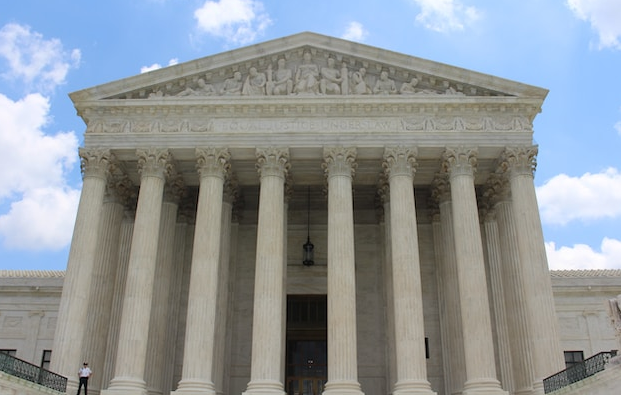With the Great Western Buildings Lawsuit, enter the complex realm of environmental responsibility & judicial scrutiny. Allegations that the construction corporation omitted important environmental impact evaluations from its development projects are at the centre of this compelling judicial struggle.
Imagine the courtroom drama, the conflicting expert testimony, & the possible repercussions for the firm & the environment as we begin our investigation. Will Great Western Buildings be held accountable by the court, or have the parties reached a private settlement that will influence corporate social responsibility?
Come along as we explore the nuances of this case, where the dramatic background of environmental debate & legal difficulties is created by continuing processes, potential settlements, & court opinions.
Allegations in Great Western Buildings Lawsuit

Image credit – Career Woman INC
The following essential elements encapsulate the main claims made in the Great Western Buildings lawsuit:
1. Bypass of Environmental Impact Assessments (EIAs): The main charge is on Great Western Buildings’ deliberate circumvention of important environmental impact assessments in their construction initiatives.
2. Deliberate Fast-Tracking: The plaintiffs contend that by disobeying the required EIA processes, the corporation intentionally accelerated its development initiatives. This purported shortcut may have included actions like improperly identifying or disclosing possible environmental effects, downplaying their importance, & leaving out or providing insufficient proposals for the required mitigating measures.
3. Violation of Environmental Laws: Since environmental impact assessments (EIAs) are required procedures intended to evaluate & manage any environmental repercussions, if the accusations are validated, they may violate environmental regulations.
4. Erosion of Environmental Accountability: Environmental Accountability Erosion Concerns about Great Western Buildings’ dedication to ethical & sustainable development methods are raised by the plaintiffs’ claims that the company’s activities undermined environmental accountability norms.
5. Potential Consequences: Ignoring Environmental Impact Assessments (EIAs) may have detrimental effects on ecosystems, soil, water, & air pollution, hazards to public health, & heightened susceptibility to natural catastrophes. These possible results highlight how serious the claimed infractions are.
6. Broader Industry Implications: The action has wider ramifications for the building sector since it raises questions about whether stronger restrictions are necessary to guarantee that businesses follow environmental norms. If proven true, these claims may establish a standard for holding businesses responsible for their environmental policies in future construction projects.
Truth Behind the Allegations in Great Western Buildings Lawsuit
Finding the truth underlying the claims made in the Great Western Buildings lawsuit requires a complex examination that takes into account a number of different viewpoints & factors:
Plaintiffs’ Arguments:
1. Evidence Presentation: Environmental organisations may provide information, studies, & expert testimony highlighting possible environmental effects that Great Western Buildings may have disregarded or minimised in their development projects. The strength of the plaintiffs’ case will be determined in large part by the veracity & scientific rigour of this evidence.
2. Motive Analysis: The core of the plaintiffs’ argument is that the business put profits ahead of its environmental obligations. They might provide internal documentation, communication logs, or behavioural patterns that point to a conscious choice to move projects forward faster by avoiding necessary EIAs in order to prove this motivation.
Great Western Buildings’ Defence:
1. Contradictory Evidence: It is anticipated that the defence would refute the plaintiffs’ allegations with its own environmental analyses, professional judgments, & explanations for project choices that purportedly avoided environmental impact evaluations. In light of the plaintiffs’ claims, the court will carefully consider the evidence’s impartiality & scientific validity.
2. Mitigation Measures: Great Western Buildings might provide proof of planned or executed mitigating actions to deal with any environmental issues. The view of the company’s environmental responsibility will be greatly influenced by the efficacy & sincerity of these actions.
Court’s Role:

Image credit – Chilli Vibes
1. Impartial Evaluation: The court will be crucial in impartially assessing all of the evidence, witness accounts, & legal arguments that are put forward. The ultimate verdict’s credibility will be enhanced by the court’s obedience to established rules & the openness of the legal processes.
2. Verdict Determination: In the end, the court will determine if Great Western Buildings broke environmental regulations by avoiding EIAs & how much of a responsibility they have. Public trust in the legal system will be influenced by how well-reasoned & coherent the court’s reasoning was in arriving at its decision.
Independent Investigations:
1. Media Reports: Investigative journalism has the potential to unearth new facts or contradictions in the statements made by the parties involved. These reports will be more reliable because of the journalistic discipline & impartiality.
2. Regulatory Scrutiny: Independent studies conducted by governmental organisations in charge of enforcing environmental laws might provide an extra degree of confirmation or debunking of the statements. Credibility of these investigations will be largely dependent on how transparent & comprehensive they are.
Overall Evaluation:
1. Uncertainty: The veracity of the accusations is still unknown as a result of the continuing legal procedures, which highlights the need of waiting patiently & carefully for the court’s decision.
2. Complexity: The case’s many points of view, scientific assessments, & intricate legal issues make it more difficult to determine what is true.
3. Dynamic Nature: The way the narrative has developed, any fresh information that may come to light, & the course of the litigation might all have an effect on how the claims are seen overall & their viability.
Current Status
There are a few options as to how the Great Western Buildings lawsuit will go forward. There may be active activities in the lawsuit, including witness testimony, evidence presentation, & legal arguments, at the pretrial stage of the case. Alternatively, the parties might have chosen to settle out of court with Great Western Buildings agreeing to hidden conditions or taking certain steps to resolve environmental concerns.
Should the litigation have gone to trial, the company’s responsibility & any possible legal repercussions—like fines or remedial actions—might have been decided by the court. While certain details may be subject to confidentiality restrictions due to the nature of legal proceedings, the most recent information on the current status can be found by searching legal databases such as Westlaw or LexisNexis, monitoring news sources for updates, & reviewing official court records.
Conclusion
Finally, the Great Western Buildings lawsuit serves as a sobering reminder of the relationship that exists between environmental responsibility & business actions. We remain in the dark on possible settlements, the upcoming court decision, & the purported circumvention of environmental impact studies while the legal drama plays out. In addition to placing Great Western Buildings under scrutiny, this case also initiates more general discussions on the need for strict standards in the building sector.
The unexpected result emphasises how carefully economic interests & environmental responsibility must be balanced. The ramifications for corporate responsibility & environmental practices while we await the outcome of this intricate legal drama will surely reverberate far beyond the courtroom, influencing the course of responsible growth in the future.








